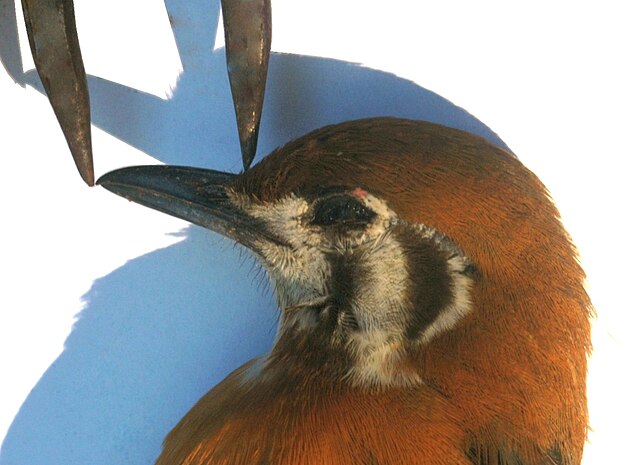Columbidae is a bird family consisting of doves and pigeons. It is the only family in the order Columbiformes. These are stout-bodied birds with short necks and short slender bills that in some species feature fleshy ceres. They primarily feed on plants, and can be taxonomically divided amongst granivores, that feed mostly on the ground on seeds, and frugivores, that feed mostly on fruits, from branches. The family occurs worldwide, often in close proximity with humans, but the greatest variety is in the Indomalayan and Australasian realms.
Columbidae
Baby pigeon
Rock dove (Columba livia) in flight
Rock dove courtship
The beak, bill, or rostrum is an external anatomical structure found mostly in birds, but also in turtles, non-avian dinosaurs and a few mammals. A beak is used for pecking, grasping, and holding, preening, courtship, and feeding young. The terms beak and rostrum are also used to refer to a similar mouth part in some ornithischians, pterosaurs, cetaceans, dicynodonts, anuran tadpoles, monotremes, sirens, pufferfish, billfishes and cephalopods.
The bony core of the beak is a lightweight framework, like that seen on this barn owl's skull.
A gull's upper mandible can flex upwards because it is supported by small bones which can move slightly backwards and forwards.
The sawtooth serrations on a common merganser's bill help it to hold tight to its fish prey.
A bird's culmen is measured in a straight line from the tip of the beak to a set point — here, where the feathering starts on the bird's forehead.








